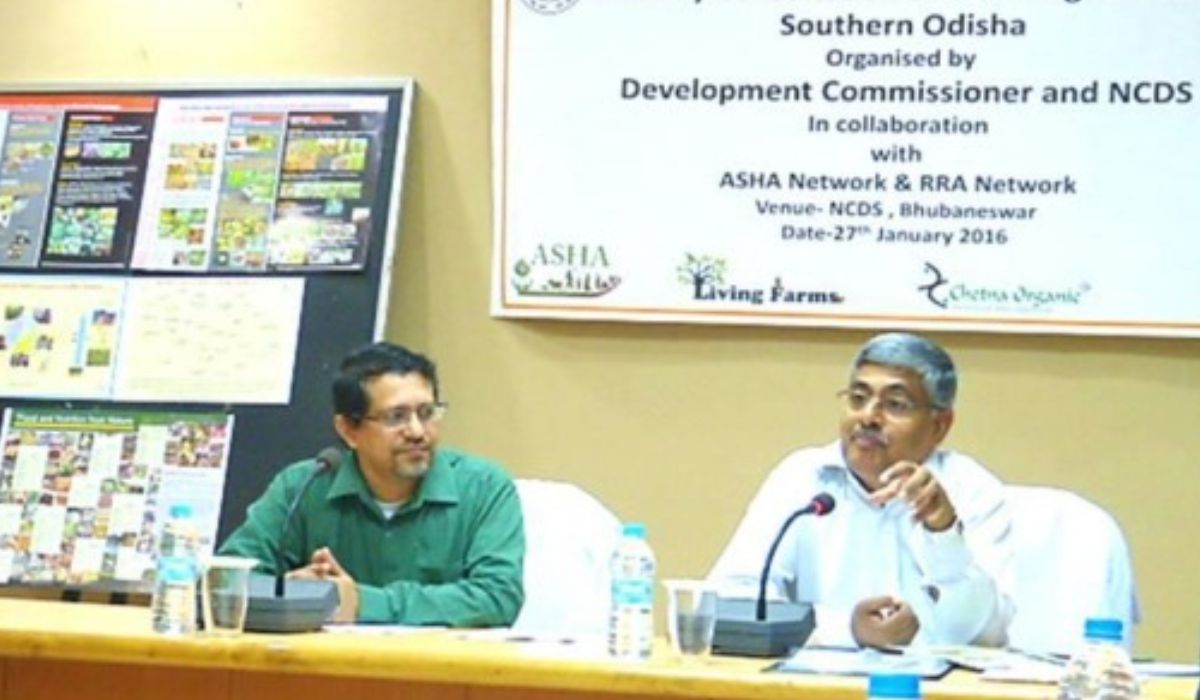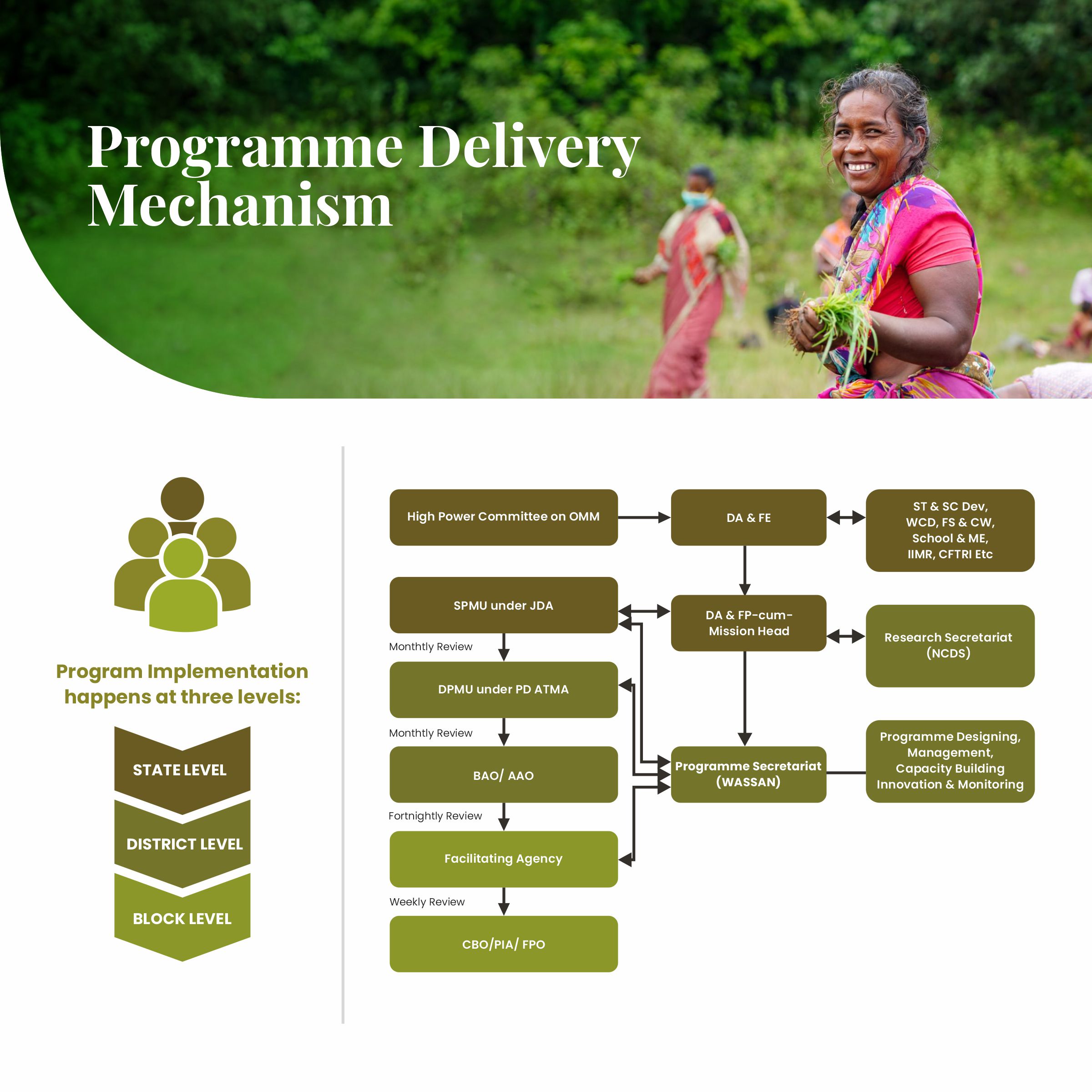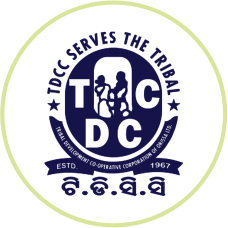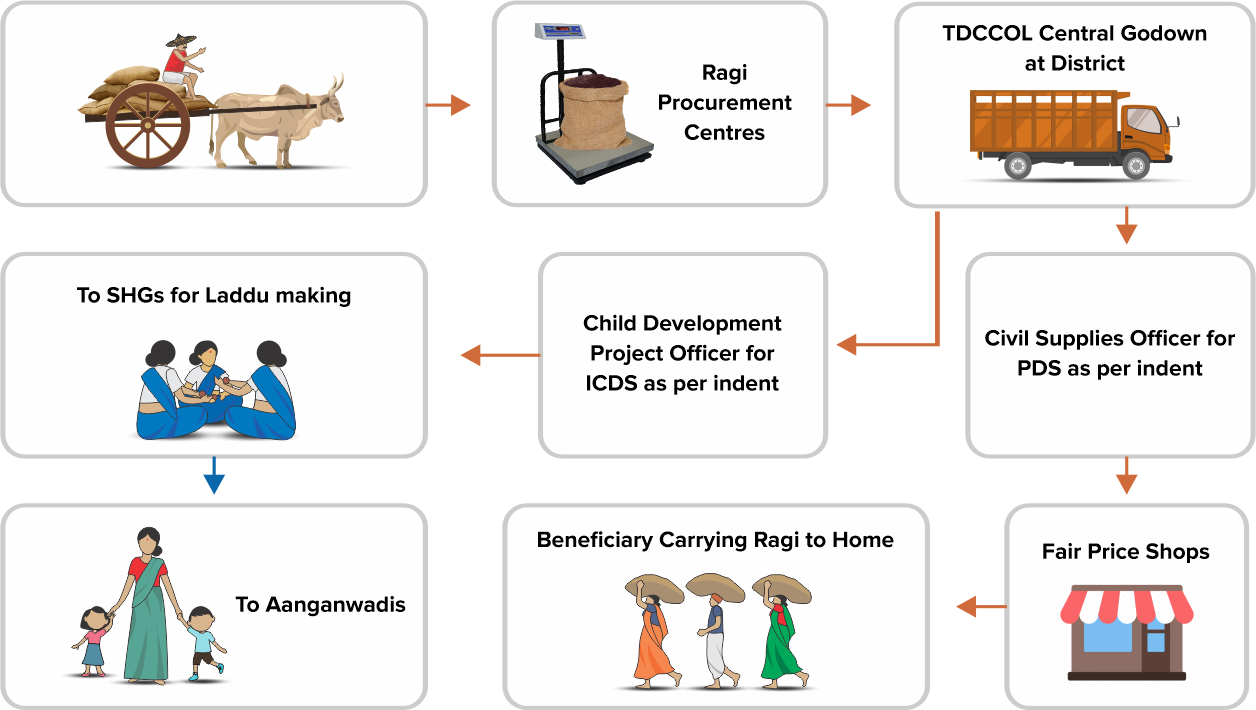.png)
Recognition and impact of Shree Anna Abhiyan
The Shree Anna Abhiyan has received recognition from many quarters.
The Government of India has asked all states to adopt Shree Anna Abhiyan model for promotion of millets, pulses and oilseeds.
The State Planning Commission of Chhattisgarh has asked the Government of Chhattisgarh to start a millet mission on the lines of "Shree Anna Abhiyan".
The Government of India has set up a task force to understand the framework of the Shree Anna Abhiyan and to revise the National sub mission on millets based on the learnings of the OMM.
Cambridge University partnered with Shree Anna Abhiyan to explore possibility of design of OMM as alternative to Green Revolution framework.
The Governor of Maharashtra has asked Government of Maharashtra to explore initiating a project on millets considering the Shree Anna Abhiyan.
UN-IFAD and UN-FAO have supported the framework of Shree Anna Abhiyan as suitable for taking up agro-ecological initiatives.



.png)
.png)









.jpg)







